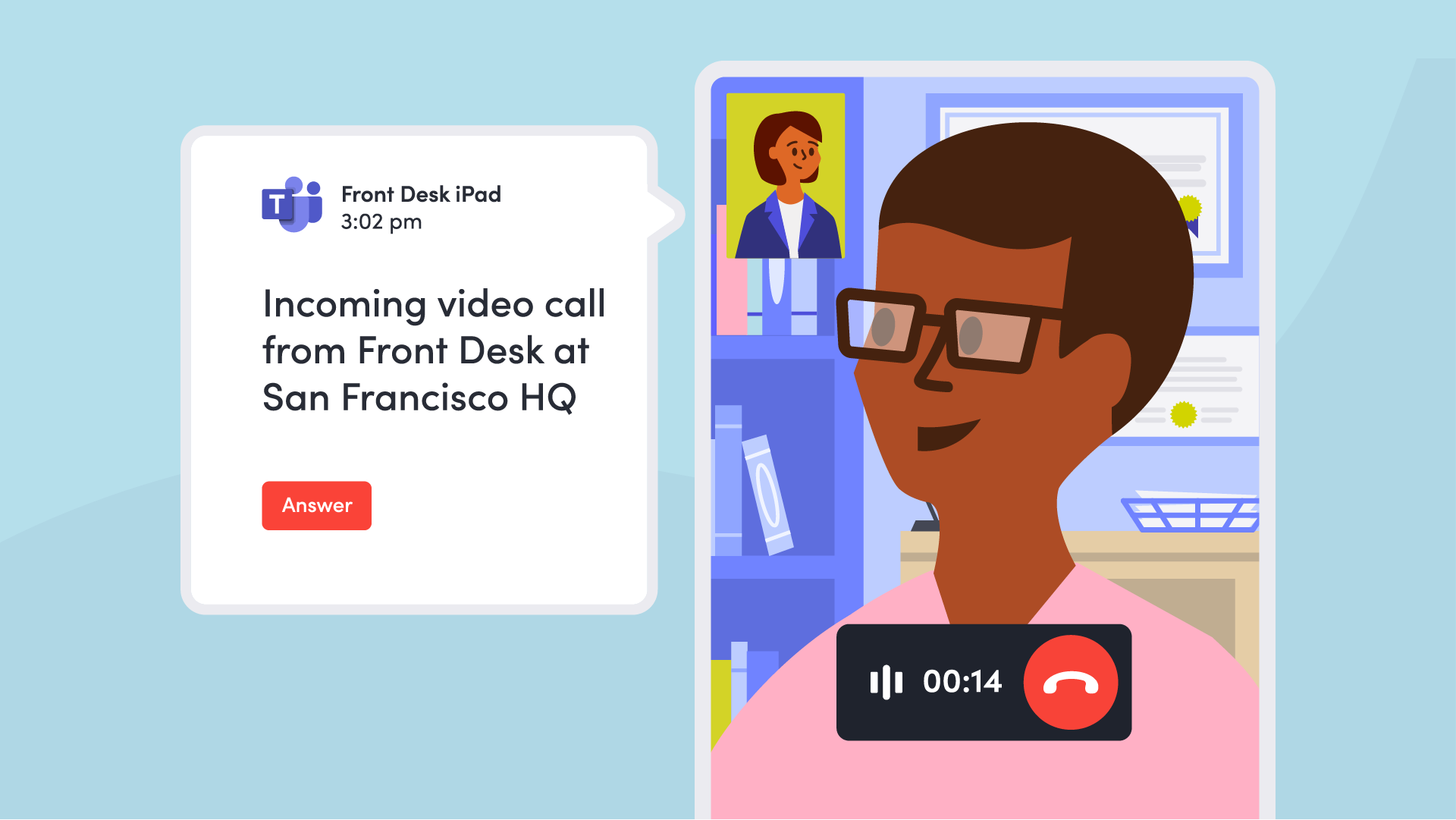For many workplaces, it's not a question of whether they need a front desk presence. It's whether they can confidently secure access—to all their sites—under growing security threats and regulatory requirements. The current economic landscape doesn't make that easy, as companies face tremendous pressure to cut costs (all without sacrificing operational efficiency, of course).
After years of disruptions, today's workplace has become global, onsite, and distributed. The benefits of using remote solutions have never been more apparent. Tools that allow you and your team to be everywhere, all the time—at once. Or, as in the case of a virtual receptionist, securely welcome and log visitors remotely from the comfort of your desk.
What is a virtual receptionist?
A virtual receptionist is a remote service or software that handles tasks traditionally managed by in-person staff, such as welcoming guests and logging their info. They can either be human-operated or automated through AI and can operate 24/7—providing a constant front desk presence.
Virtual receptionist software can also integrate with a visitor management system (VMS) to offer additional features like automated call transcripts, instant host notifications, and digitized visitor logs.
{{protip-1}}
How companies are using virtual receptionists
Companies with multiple sites are using virtual receptionists to make a positive first impression—consistently. Here are a few ways you can use this tool:
- Remotely staff unattended front desks. Smaller satellite offices that don’t regularly receive enough visitors to justify staffing a front desk can use a virtual receptionist to sign in and log visitors.
- Provide coverage to supplement a limited staff. Offices with only one or two staff members can use it to cover if someone is on PTO, has to step away, or if a visitor arrives after hours.
- Secure locations with multiple entrances. Some workplaces have secondary access points that, left unattended, could lead to security risks and compliance violations. Companies can use this tool to secure these areas and ensure all visitors are accounted for.
- Help employees navigate the office. A virtual receptionist can provide prompt support for employees who’ve lost their badges or need to locate resources around the workplace.
What are the benefits of using a virtual receptionist?
Using this solution offers several key benefits for businesses:
- Streamlined visitor experience. Virtual receptionists allow visitors to self-serve the sign-in process and get assistance from a real person, even at unstaffed front desks or after hours.
- Improved operational and cost efficiency. These services reduce costs by leveraging the same person or team to support guests at multiple offices across different geographies and time zones.
- Better workplace security. They can also integrate with VMS solutions, ensuring that all visitors are logged, identities are verified, and access is controlled.
- True scalability. Ideal for businesses with multiple sites, virtual receptionists can easily scale to meet the needs of growing organizations.
Introducing Envoy's Virtual Front Desk solution
Traditional front desks struggle to keep pace with today's demands. Staffing limitations make consistent, high-quality service across geographically dispersed offices difficult. The result? Frustrated visitors and a drain on resources.
Envoy's Virtual Front Desk shatters geographical, technical, and resource-based barriers by leveraging the power of remote receptionists, ushering in a new era of front desk management.
- Security and compliance without compromise. Welcome visitors and employees across multiple sites with confidence, regardless of time zone or physical presence. Virtual Front Desk ensures secure sign-in and access control, while our VMS, Envoy Visitors, streamlines the process for a seamless visitor experience.
- Enhanced visitor management and experience. Identify visitor patterns over time and recurring visitor questions to predict peak times and address common issues. Management can listen to call recordings and review transcripts to make sure your staff is thorough, friendly, and follows the correct process.
- Informed decisions powered by data. Use real visitor flow data to plan staffing, allocate resources, and even design office layouts. Satellite offices that don't regularly receive enough visitors to justify staffing a front desk can use Virtual Front Desk to sign in and log visitors.
The future of visitor management is here, and it's virtual.
Envoy's Virtual Front Desk isn't just about visitor management; it's about using data to build better, more efficient workplaces. It's the future of hospitality, empowering companies to create a seamless experience for everyone who walks through the virtual or physical door.
—
Are you interested in learning more about Envoy's Virtual Front Desk? Check out our webinar, "Rethinking the Welcome: Introducing Envoy's Virtual Front Desk," to find out more!
Example of how a virtual receptionist works: When a visitor arrives, they interact with a tablet that connects them to a remote receptionist via video intercom. The receptionist can verify the visitor's identity, notify the relevant employee, and even handle security protocols, all while sitting in a different location.
Read more
Searching for a visitor management solution? Learn what to look out for and how to choose the best tech for your team.
Managing your space well doesn’t have to be difficult. But if you want to be successful, you need the right approach.
A well-run workplace can set your team up for success. Learn why workplace management matters and how to do it right.
Workplace security is critical to the future of your business. Learn why it matters, what threats to watch for, and how to strengthen your workplace security plan.
In this post, we’ll explore what workplace compliance is and how to build a compliance culture for your organization.
With more folks sending personal packages to the workplace, having a sound mailroom management system in place is key.










